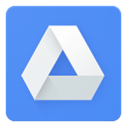DLP for Google Drive Security: General and Brief Description


It is the critical responsibility to protect confidential information for enterprise, regardless of the fact that where their data is stored. In January 2017, Google announced DLP for Google drive security. It benefited business users with more controls in G Suite enterprise edition over how files are shared outside the firm. This blog is going to brief readers about Data loss prevention for Google Drive security.
Introduction of DLP for Google Drive
Google data loss prevention, also termed as data leakage prevention, refers to a system. It is purposely designed to supervise and identify potential information breaches and keep data safe from unauthorized transferring. Google drive is used by several organizations to store confidential files of business. These confidential content can be any like PII, credit card details, intellectual property, financial statements, etc. Therefore, it becomes mandatory to keep G Drive for business safe from data breach incidents.
Being an administrator of G Suite for Education or Enterprise, you are having full authority to prevent employees from transferring sensitive information in Google Drive. You can make use of DLP for Google drive rules to scan files in order to determine sensitive type of content. For example –
If an employee shares documents with tax ID numbers or bank account information then, an email could be sent to administrator about this activity. This will warn him that this activity is taking place and if required, block the person from during such activity.
How Google DLP Rules Work?
One can either create a new template or use predefined templates. All the data loss prevention rules can be assigned in the whole domain, a particular group of G Group, or an organizational unit. In order to apply all rules in ‘Team Drive‘ files, you have to apply the rule for all users who are working within your firm. If a confidential data is detected, it is your time to take an action. Following instructions can be utilized for defining a DLP rule in G Drive:
Triggers – The program guides that rule scanning is currently available for the Drive, which comprises of Team Drives.
Conditions – Make changes on the basis of ‘how to apply rules for users and content‘.
- Users – The rule can be applied to one organizational unit, a Google Group or both. Append a rule for all employees who are working with Team Drive files. The rule will scan documents owned by the users in a particular organization or group. You can add and exempt as many organizations and groups as much as you want. If nothing is customized, the rule will be applied to top-level enterprise.
- Content – If the content matched with predefined set of content detectors, you will find a trigger giving notification. Rule trigger is applied in this case. Also, it can be used if rules get matched with a custom regular expression, which you have chosen. There is no limit to append as many content type, word list, or regular list.
Actions – What actions should be taken on particular issue? Even if you have not chosen an action then, matching content is flagged and listed in report information.
- Give assurance that the confidential text will be used from accessing if users are trying to work with it from some other geolocation. Even if the user is a member of Team Drive, then also he/she will be restricted from using the content.
- Whenever an employee tries to share business content with an outsider, an instant notification will be generated and flashed on the screen of the G Drive super administrator.
- When an employee creates, uploads, or edits a document with secretive content, an email is sent to super admin. This Google DLP rule comes into action whenever sensitive content is tried to modified.
Different Workarounds to Create DLP for Google Drive Security
#1: Make Use of Predefined Templates
- Sign in into your Google Admin console. This opens an Admin console where you have to click on More Controls >> Rules
- Open the templates list by clicking on the Add icon or click on Templates at the top of the page
- Choose anyone template from displayed predefined list in the Data Loss Prevention field
- If want to make some modifications, change the rule title and description
- Go to Triggers, Actions, and Conditions to make updates within it, if any
- At last, click on Create and Activate to finally create DLP for Google Drive security using predefined templates.
#2: Make Use of Blank Templates
- Login into your Google Admin Console and click on More Controls >> Rules
- Go to top of the web page and click on Templates
- Click on the Blank Template button, located under data loss prevention section
- Enter the title of new DLP rule in its respective section and mention technical description in the next field
- Add Conditions, Triggers, and Actions in new rule and click on Done
- After this, click on Create and Activate button to finally create a new Google DLP rule
Conclusion
DLP for Google Drive security is a need for business in today’s digital scenario. It is not only needed in IT section but, also for cloud security in education, healthcare, and other fields. Apart from all this, organizations can also take help from CloudCodes Google cloud security solutions provider. The aim of these providers is to give services to their customers to apply best and advance security approaches on G Drive.